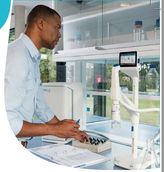Analyst Comment -Tackling HCV: A Combination Of Therapy & Monitoring
Over the years hepatitis C (HCV) has taken a back-seat role, receiving far less attention than it has deserved, mainly due to the fact that HIV-AIDS remains one of the principal causes of death world-wide. However, recent efforts by politicians and hospital researchers have raised the profile of this potentially life-threatening malady. Alex Wong, Research Analyst from Frost & Sullivan (http://biotech.frost.com), tracks how the improved efficacy of combination drug therapy for the treatment of HCV has led to a surge in demand for HCV diagnosis.
Rampant HCV knows no boundaries
With HIV-AIDS traditionally making all the headlines, many people do not realise that HCV is in fact a more widespread disease. Recent data suggest that there are approximately 200 million people infected with HCV globally, with about 5 million people in Europe. It is thought that for every person infected with HIV, there are at least four more infected with HCV. Symptoms of HCV include chronic hepatitis, cirrhosis and hepatocellular carcinoma.
In the past, treatment of HCV was based solely on interferon. More recently, encouraging results have been obtained through the employment of a combination of drugs, such as pegylated interferon alfa-2a and ribavirin, for HCV management.
Early diagnosis and treatment of HCV is particularly important so as to avoid progression to severe liver disease, which remains a leading cause of death in hepatitis C sufferers. In order to optimise management of HCV, viral load monitoring is essential. Although these monitor kits are more expensive compared to conventional qualitative detection methods, monitor assays allow quantitation of the amount of virus in the blood.
The HCV market: money-making monitoring
There are currently more HCV cases compared to HIV-AIDS cases across Europe, with the prevalence of HCV particularly high in southern Europe. The market for HCV monitor tests, still in its youth, is expected to experience tremendous growth over the next decade, illustrated by the large populations who have yet to be tested. For example, there are approximately 700,000 HCV sufferers in France, yet only one in three people are treated.
At present, only three companies, with different proprietary technologies, are present n the HCV monitor market: Roche Diagnostics (polymerase chain reaction-based kit), Bayer Diagnostics (branched DNA-based kit) and BioMérieux (nucleic acid sequence-based amplification kit).
In 2002, the European market for qualitative and quantitative NATs used for the diagnosis of HCV was valued at approximately $49 million, marginally less than the $53 million estimated for the HIV market. However, the market for HCV tests, only established in some European countries at the turn of the century, is expected to grow considerably due to the growing adoption of quantitative tests throughout Europe to monitor HCV therapy. In fact, the HCV market is highly likely to overtake the revenues generated through sales of HIV NAT kits by 2006.
Surveillance of HCV
Underlying the whole HCV market is the availability of efficacious drugs. Healthcare services across Europe in general are coming under increasing pressure to reduce their expenditure. Although the combination of drugs used in HCV therapy continue to be sold at high prices, too costly for most patients in developing countries, the demand for integrated therapeutic and diagnostic systems is expected to boom.
Over the next decade and beyond, patients who are currently asymptomatic or who are displaying relatively mild disease are anticipated to develop severe end-stage liver disease. This will represent a huge burden on health care systems which are already struggling to function efficiently due to budget restraints.
According to many experts, integrated management is necessary to combat HCV. Essentially, the objective of such management is to tailor therapy to those patients who are most likely to benefit, thus improving both clinical efficacy and cost efficiency. Monitor kits, based on a variety of nucleic acid-based amplification tests (NAT), are being employed more and more to track the progress of patients who have been prescribed a course of drugs over a period of 12, 24 or 48 weeks. Therefore, depending on the response, clinicians are able to modify the antiviral therapy. For example, patients not responding to treatment are taken off it, whereas those with undetectable viral load continue therapy.
The importance of hepatitis C infections should not be underestimated, a view which is now shared by governments and health care departments alike. Over the next decade, the market for monitor kits, which are proving to be a valuable tool in the fight against HCV, is expected to prosper, particularly with viral load monitoring now being employed.




























































